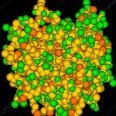CEILING LAMP ASSEMBLY - Fluorescent round tube type
-
Recently Browsing 0 members
- No registered users viewing this page.
-
Topics
-
-
Popular Contributors
-
-
Latest posts...
-
91
Report Thailand's Future at Risk: Education and Job Woes Loom
FROM ABOVE: "I have had quite a few conversations with Thai teachers and the common thread seems to be a fear of the little darlings when they raise their hand and ask "why"." My first degree, in AUstralia, was in education. I always remeber the spedific lecture relating to this point. The elctuer shared: - For primary / high school: Make an excuse to give you enough time to check for a correct answer and give it quickly (same or ext day). - For university, turn the students question into a quick case study, divide the class into small teams (no more than 3* students) and give all the teams 15 minutes research** time and then quickly share their answers. * More than 3 in a team and 2 will do the work while all the rest check fashion / cosmetics / cars etc on their phones and very probably get credit for a good work but they didn't do anyting to achieve the grade - not fair. ** In many unis students are allowed to have a tablet / smartphone for research work in their bag, but outside of research time phone cannot come out of the students bag. -
56
Report Cambodia Nominates Trump for Nobel Peace Prize
He thanks Trump for his mediation and organising the meeting. You can't deny this yet you do. 6:59 I also extended my deep appreciation to 7:03 President Donald Trump for his decisive 7:06 mediation on 26th July 2025. 7:09 Cambodia values the effort of the United 7:11 States and thanks government for 7:14 organizing this crucial meeting in 7:16 support of peace. -
46
Has anyone been charged a service fee for a low account balance by a Thai bank?
That sounds very high. Most banks charge 50 Baht monthly, I believe. The 200 Baht fee is often the annual fee deducted for ATM card. -
9
-
24
Transport Pattaya Gridlock Sparks Urgent Transport Solutions
I have a quick and easy idea: close certain roads to general traffic and purchase EV buses. Problem solved. And much cheaper and faster for implementation. Where can I collect my consulting fee? Ah, forgot. Thais rarely listen to foreign ideas... -
-
-
Popular in The Pub








Recommended Posts
Create an account or sign in to comment
You need to be a member in order to leave a comment
Create an account
Sign up for a new account in our community. It's easy!
Register a new accountSign in
Already have an account? Sign in here.
Sign In Now